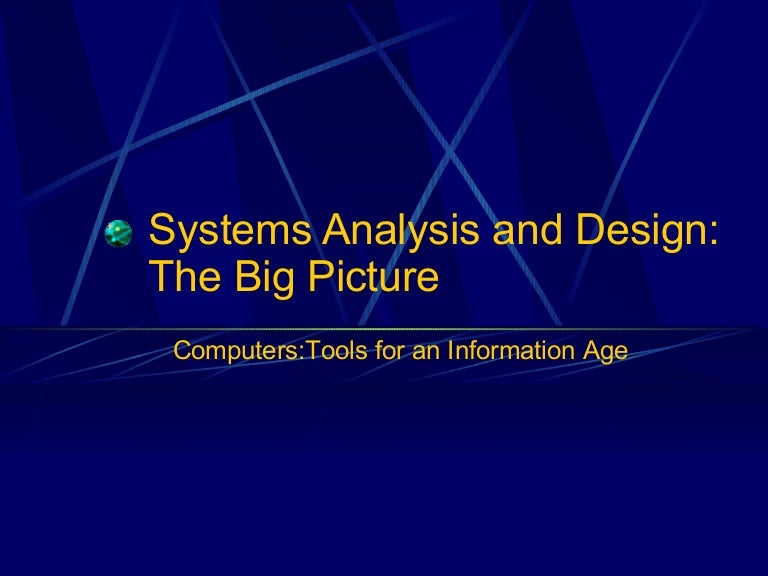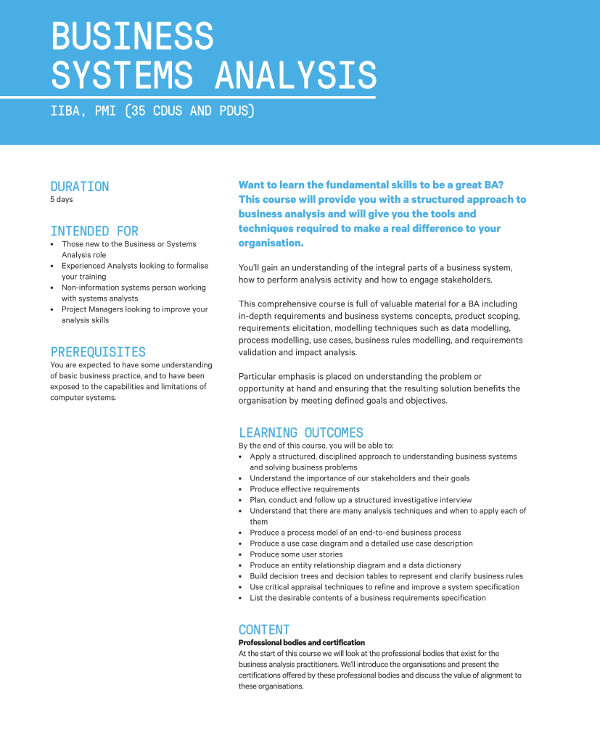Table Of Content

The waterfall model is a popular version of the systems development life cycle approach that is considered farthest to the left on the predictive/adaptive scale for software engineering. Often considered the classic approach to the systems development life cycle, the waterfall model (mostly predictive) describes a development method that is linear and sequential. Waterfall development has distinct goals for each phase of development. Once a phase of development is completed, the development proceeds (drops over the waterfall) into the next phase and there is no turning back.
Search
It is a language used to specify, visualize, and document the artifacts of an object-oriented system under development. You can model just about any type of application running on any type of hardware, operating system, programming language, and network with UML. It is a natural fit for Oject-Oriented languages and environments but you can use it to model non Object-Oriented applications as well. System analysis is used in every field where something is developed. Analysis can also be a series of components that perform organic functions together, such as systems engineering.
SDLC Phases[edit edit source]
This information will become the projects charter and the basis for initiating the project. The project then follows the PLAN-DO CHECK-ACT cycle (as defined by Shewhart and modified by Deming, in the ASQ Handbook, pages 13-14, American Society for Quality, 1999). This process should increase the likelihood of deliverable acceptance. Practitioners of system analysis are often called up to dissect systems that have grown haphazardly to determine the current components of the system. It has been said that if you can not document the artifacts of your work, you will probably fail. The Unified Modeling Language (UML) provides a very robust notation, which grows from analysis to design.

Systems Development Methods[edit edit source]
Before coding, there should be a understanding on pseudo, algorithm and the high level language(C, C++, C#, Java, etc.) you want to make use of. Modern programming usually requires an object oriented approach to software development. Object-oriented development attempts to use the classifications, relationships, and properties of objects to aid in program development.

The approach is natural because people tend to think about things in terms of tangible objects and because many systems within an organization uses the same objects (i.e. windows, dialog boxes, menus, and buttons) the classes can be used repeatably. [8]Also, O-O analysis provides an easy transition to popular O-O programming languages, such as Java and C++. Systems Analysis and Design is an active field in which analysts repetitively learn new approaches and different techniques for building the system more effectively and efficiently. The primary objective of systems analysis and design is to improve organizational systems. This tutorial provides a basic understanding of system characteristics, system design, and its development processes. It is a good introductory guide that provides an overview of all the concepts necessary to build a system.
If it is a large system involving many different departments, maintenance and support may be needed for a longer time. If is a smaller system, maintenance and support may only be needed for a short time. Although this section presents the information security components in a sequential top-down manner, the order of completion is not necessarily fixed. Security analysis of complex systems will need to be iterated until consistency and completeness is achieved. It is the arrangement of components that helps to achieve predetermined objectives. The word System is derived from Greek word Systema, which means an organized relationship between any set of components to achieve some common cause or objective.
Computer Systems Analyst - Career Rankings, Salary, Reviews and Advice US News Best Jobs - U.S News & World Report Money
Computer Systems Analyst - Career Rankings, Salary, Reviews and Advice US News Best Jobs.
Posted: Mon, 02 Jan 2017 20:23:56 GMT [source]
The objects contain both attributes and operations that interact to meet a specific need. Attributes are properties that relate to the object and operations are methods or actions that the object can perform to modify itself or data. Access to the data within an object is available only via the objects operation also known as the interface to the object. You can easily alter the details controlling how the object is implemented to improve performance , add new features, or fix bugs without changing the interface. This allows the other parts of the project to access the object and remain unaltered.
Dynamic System Models
Structured analysis is a traditional systems development technique that is time-tested and easy to understand. Because it describes the processes that transform data into useful information, structured analysis is called a process-centered technique. In addition to modeling the processes, structured analysis includes data organization and structure, relational database design, and user interface issues. Structured analysis uses a series of phases, called the systems development life cycle(SDLC) to plan, analyze, design, implement, and support an information system.Structured analysis relies on a set of process models that graphically describe a system. Process modeling identifies the data flowing into a process, the business rules that transform the data, and the resulting output data flow. MSF uses O-Oanalysis and design concepts, but also examines a broader business and organizational context that surrounds the development of an information system[9].
Whereas structured analysis regards processes and data as separate components, object-oriented analysis combines data and the processes that act on the data into things called objects. Object-oriented analysis defines the different types of objects that are doing the work and interacting with one another in the system and by showing user interactions, called use cases, are required to complete tasks. Systems analysts use O-O methods to model real-world business processes and operations. The result is a set of software objects that represent actual people, things, transactions, and events. Using an O-O programming language, a programmer then transforms the objects into reusable code and components. However, on the right side of the predictive/adaptive scale we are able to make modifications in different phases; this is called a modified waterfall model.
Whole-system analysis reveals high greenhouse-gas emissions from citywide sanitation in Kampala, Uganda ... - Nature.com
Whole-system analysis reveals high greenhouse-gas emissions from citywide sanitation in Kampala, Uganda ....
Posted: Tue, 05 Apr 2022 07:00:00 GMT [source]
Once an application is in the testing stage, it is very difficult to go back and change something that was not well-thought out in the concept stage. This pure waterfall model makes it very difficult because there is no room for error and that is virtually impossible when dealing with humans. Use cases are widely used system analysis modeling tools for identifying and expressing the functional requirements of a system. Each use case is a business scenario or event for which the system must provide a defined response. The terms analysis and synthesis stems from Greek, meaning "to take apart" and "to put together", respectively.
Chapter 1 introduces the systems development life cycle (SDLC), the fundamental four-phase model (planning, analysis, design, and implementation) common to all information systems development projects. It describes the evolution of system development methodologies and discusses the roles and skills required of a systems analyst. The object-oriented approach has many benefits, they provide naturalness and reuse.
The spiral life cycle is shown as a spiral model that begins with the planning phase first from the center (inward) of the spiral, eventually working its way outward, over and over again, until completion of the project. The planning phase will include activities such as feasibility study, a survey of user's requirements, overall design choice, generation of implementation alternative, and implementation strategy. The purpose of this phase is to have enough information to build a prototype. While practitioners of system analysis can be called upon to create new systems, they often modify, expand, or document existing systems (processes, procedures, and methods). Activity system analysis has been already applied to various research and practice studies including business management, educational reform, educational technology, etc. The advantage of waterfall development is that it allows for departmentalization and managerial control.
A schedule can be set with deadlines for each stage of development and a product can proceed through the development process like a car in a carwash, and theoretically, be delivered on time. Development moves from concept, through design, implementation, testing, installation, troubleshooting, and ends up at operation and maintenance. Each phase of development proceeds in strict order, without any overlapping or iterative steps. Initiating a project first requires the documenting of needs or requirements.Clear objectives should be developed from this study with reasons for selecting the objectives.Deliverables then need to be documented along with the project scope.
One can use a template to create a project but with Ad Hoc, it is not possible. Planning the system requires the user to define what the problem is. The planning may also include how the user would like to solve the problem. Defining the scope of the problem is also important in this stage as well.

No comments:
Post a Comment